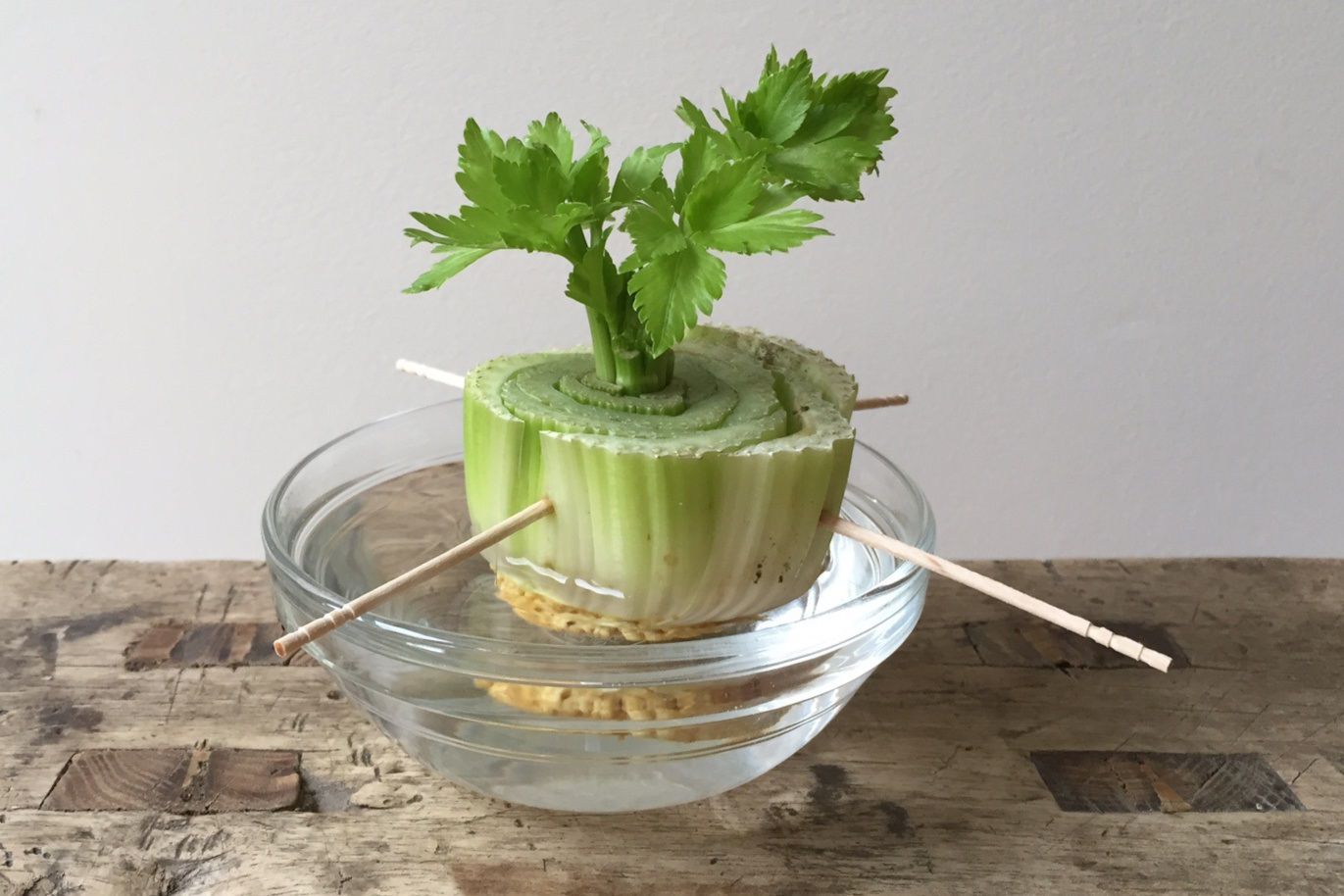Home>Gardening News and Trends>Gardening Trends>What Herbs Can You Put In Your Bath


Gardening Trends
What Herbs Can You Put In Your Bath
Published: September 28, 2023
Discover the latest gardening trends and learn about the herbs you can add to your bath for a rejuvenating and aromatic experience. Enhance your self-care routine with these natural remedies.
(Many of the links in this article redirect to a specific reviewed product. Your purchase of these products through affiliate links helps to generate commission for Chicagolandgardening.com, at no extra cost. Learn more)
Table of Contents
Introduction
When it comes to creating a relaxing and rejuvenating experience, adding herbs to your bath can be a game-changer. The practice of infusing herbs into bathwater has been around for centuries, celebrated for its therapeutic benefits and ability to enhance relaxation and well-being.
Herbs have long been cherished for their aromatic scents, soothing properties, and various health benefits. Whether you’re looking to ease stress, soothe sore muscles, or simply indulge in a luxurious self-care ritual, there are a variety of herbs that can transform your bath into a spa-like sanctuary.
In this article, we will explore the different herbs you can add to your bath and their unique properties. From the calming scent of lavender to the invigorating aroma of eucalyptus, each herb brings its own distinct benefits to enhance your bathing experience.
So, if you’re ready to dive into the world of herbal baths and create a blissful sanctuary in your own bathroom, read on to discover the herbs that will elevate your bathing rituals to new heights.
Lavender
Lavender is one of the most popular herbs used in bath rituals, thanks to its soothing and calming properties. The beautiful purple flowers of the lavender plant release a delightful floral fragrance that helps relax the mind and promote a restful sleep.
Not only does lavender create a serene atmosphere, but it also provides various health benefits. Research has shown that the scent of lavender can help reduce anxiety and stress levels, making it an ideal addition to your bath after a long and hectic day.
In addition to its calming effects, lavender can also help alleviate muscle tension and headaches. Soaking in a lavender-infused bath can provide relief from sore muscles, aches, and pains, leaving you feeling refreshed and rejuvenated.
To incorporate lavender into your bath, you can use lavender essential oil, dried lavender buds, or even fresh lavender sprigs. Add a few drops of lavender oil or a handful of dried lavender buds to your bathwater and allow the aroma to envelop you as you soak. You can also tie fresh lavender sprigs together and hang them under the faucet, allowing the water to flow through them and infuse your bath.
If you prefer a more indulgent experience, consider adding a few drops of lavender essential oil to a carrier oil or bath salts. This creates a luxurious and therapeutic bath experience, as the oil disperses throughout the water, releasing its calming and soothing scent.
So next time you’re in need of relaxation and tranquility, draw yourself a lavender-infused bath and let the stress melt away as you immerse yourself in its calming embrace.
Chamomile
Chamomile is an herb that is widely known for its calming and soothing properties. Derived from the daisy-like flowers of the chamomile plant, this gentle herb has been used for centuries to promote relaxation and improve sleep.
Adding chamomile to your bath can create a blissful and tranquil experience. The sweet, floral aroma of chamomile helps to calm the mind and reduce stress and anxiety. This makes it the perfect herb to incorporate into your bath routine, especially if you’re looking to unwind after a long day.
In addition to its relaxing properties, chamomile also offers several benefits for the skin. It has anti-inflammatory and antibacterial properties, which can help soothe skin irritations and promote a healthy complexion. If you suffer from dry or irritated skin, a chamomile-infused bath can provide relief and nourishment.
To incorporate chamomile into your bath, you can use chamomile essential oil, dried chamomile flowers, or chamomile tea bags. If using essential oil, add a few drops to a carrier oil or bath salts and mix well before adding to your bathwater.
If you have dried chamomile flowers or chamomile tea bags, you can create a soothing bath infusion by steeping them in hot water for a few minutes. Once the water has cooled down, add it to your bath and enjoy the subtle, floral scent and the benefits of chamomile on your skin.
So next time you’re in need of relaxation and skin rejuvenation, indulge in a chamomile-infused bath to soothe both your body and mind.
Rosemary
Rosemary is an aromatic herb that is not only commonly used in the kitchen but also has several benefits when added to your bath. Known for its invigorating scent and medicinal properties, rosemary can turn your bath into a revitalizing and refreshing experience.
The uplifting aroma of rosemary can help stimulate your senses and improve mental clarity. It is often used as a natural remedy to combat fatigue and improve focus and concentration. Adding rosemary to your bath can be especially beneficial if you’re feeling tired or need a little boost of energy.
In addition to its invigorating scent, rosemary also has antiseptic and anti-inflammatory properties, making it an excellent choice for soothing and rejuvenating the skin. It can help soothe dry and itchy skin, leaving it feeling refreshed and hydrated.
To incorporate rosemary into your bath, you can use fresh rosemary sprigs or rosemary essential oil. If using fresh rosemary, simply tie a bunch of sprigs together and hang them under the faucet as the water fills the tub. This allows the water to flow through the sprigs, infusing your bath with the aromatic scent and beneficial properties of rosemary.
If you prefer to use essential oil, add a few drops to a carrier oil or bath salts before adding them to your bathwater. This helps to disperse the oil throughout the water, enabling you to fully enjoy the revitalizing effects of rosemary.
So the next time you’re in need of a pick-me-up or want to invigorate your senses, reach for rosemary and transform your bath into an energizing and refreshing escape.
Eucalyptus
Eucalyptus is a powerful herb known for its refreshing and invigorating properties. With its distinct minty and pine-like aroma, adding eucalyptus to your bath can create a spa-like experience that promotes relaxation and rejuvenation.
The scent of eucalyptus has a cooling effect on the body and can help clear the mind. It is often used to relieve congestion and promote easier breathing, making it an ideal choice during cold and flu seasons. Incorporating eucalyptus into your bath can provide a refreshing and revitalizing experience, especially when you’re feeling under the weather.
In addition to its respiratory benefits, eucalyptus also offers antiseptic and anti-inflammatory properties, which can be beneficial for the skin. It can help calm irritations, reduce redness, and promote a healthy complexion. Soaking in a eucalyptus-infused bath can leave your skin feeling refreshed and revitalized.
To add eucalyptus to your bath, you can use eucalyptus essential oil or fresh eucalyptus leaves. If using essential oil, mix a few drops with a carrier oil or bath salts before adding them to your bathwater. This ensures that the oil disperses evenly throughout the water, releasing the invigorating scent and beneficial properties of eucalyptus.
If you have fresh eucalyptus leaves, you can tie them together and hang them under the faucet as the water fills the tub. As the water flows through the leaves, it will infuse your bath with the refreshing aroma of eucalyptus.
So the next time you’re looking to create a spa-like oasis in your bathroom, consider adding eucalyptus to your bath and indulge in its rejuvenating and refreshing effects.
Peppermint
Peppermint is a versatile herb that can provide a refreshing and invigorating experience when added to your bath. Known for its cooling and soothing properties, peppermint offers numerous benefits for both the mind and body.
The aromatic scent of peppermint can help uplift your mood and provide mental clarity. It is often used to relieve stress, anxiety, and mental fatigue. Adding peppermint to your bath can create a rejuvenating and energizing ambiance, leaving you feeling refreshed and revitalized.
Peppermint also has analgesic properties, making it an excellent herb for relieving muscle aches and pains. Soaking in a peppermint-infused bath can provide relief from sore muscles and inflammation, especially after a strenuous workout or a long day.
In addition to its stimulating effects, peppermint also has antibacterial properties and can help cleanse and purify the skin. It can help soothe irritated skin, reduce redness, and promote a healthy complexion.
To incorporate peppermint into your bath, you can use peppermint essential oil or fresh peppermint leaves. If using essential oil, dilute a few drops in a carrier oil or bath salts before adding them to your bathwater.
If you have fresh peppermint leaves, you can muddle them or crush them slightly to release their refreshing aroma. Add the crushed leaves directly to your bathwater or tie them together in a muslin cloth and let the water flow through it as the tub fills.
So the next time you need a pick-me-up or want to revitalize your senses, consider adding peppermint to your bath and immerse yourself in its refreshing and stimulating properties.
Lemon Balm
Lemon balm, also known as Melissa officinalis, is a fragrant herb from the mint family that offers a variety of benefits when added to your bath. With its gentle lemony scent and calming properties, lemon balm can create a soothing and uplifting bathing experience.
The citrusy aroma of lemon balm has a calming effect on the mind and can help alleviate stress and anxiety. It promotes relaxation and a sense of well-being, making it a perfect addition to your bath routine, especially if you’re looking to unwind after a long day.
In addition to its calming effects, lemon balm is also known for its antiviral and antibacterial properties. It can help soothe irritated skin, reduce inflammation, and promote a healthy complexion. Incorporating lemon balm into your bath can leave your skin feeling refreshed and rejuvenated.
To add lemon balm to your bath, you can use lemon balm essential oil, dried lemon balm leaves, or fresh lemon balm sprigs. If using essential oil, dilute a few drops in a carrier oil or bath salts before adding them to your bathwater.
If you have dried lemon balm leaves, you can place them in a muslin cloth and tie it securely. Hang the cloth under the faucet as the water fills the tub, allowing the water to flow through the leaves and infuse your bath with the gentle lemony scent.
For a more indulgent experience, you can also create a lemon balm bath infusion by steeping dried or fresh lemon balm leaves in hot water for a few minutes. Strain the infusion and add it to your bath, enjoying the soothing and refreshing benefits of lemon balm on your skin.
So the next time you’re looking to create a serene and calming bathing experience, reach for lemon balm and immerse yourself in its gentle and uplifting properties.
Calendula
Calendula, also known as marigold, is a vibrant and cheerful herb that offers a range of benefits when added to your bath. With its sunny petals and soothing properties, calendula can create a relaxing and rejuvenating bathing experience.
Calendula has long been known for its healing properties, making it an excellent choice for soothing irritated or sensitive skin. It has anti-inflammatory and antimicrobial properties, which can help calm skin irritations, reduce redness, and promote healthy skin.
The gentle and floral scent of calendula can also have a calming effect on the mind and promote a sense of tranquility. Adding calendula to your bath can create a serene ambiance, helping you unwind and release stress.
To incorporate calendula into your bath, you can use dried calendula flowers or calendula-infused oil. If using dried flowers, place them in a muslin cloth or a mesh bag and hang it under the faucet as the water fills the tub. This allows the water to flow through the flowers, releasing their soothing properties into your bath.
Alternatively, you can use calendula-infused oil by adding a few drops to your bathwater. Calendula oil is known for its nourishing and moisturizing properties, leaving your skin feeling soft and supple.
If you prefer a more indulgent experience, you can also make your own calendula bath soak by infusing dried calendula flowers in a carrier oil for several weeks. Strain the oil and add a few tablespoons to your bath, immersing yourself in the soothing and healing benefits of calendula.
So the next time you’re in need of a calming and rejuvenating bath, turn to calendula and indulge in its gentle and comforting presence.
Sage
Sage is a powerful herb known for its earthy aroma and medicinal properties. When added to your bath, sage can offer a variety of benefits, making it a wonderful herb to include in your bathing routine.
Sage has long been used for its cleansing and purifying properties. It is believed to help remove negative energy and promote positive emotions. Adding sage to your bath can create a spiritual and uplifting experience, helping you release stress and promote inner peace.
In addition to its emotional benefits, sage also has antimicrobial properties, which can help cleanse and purify the skin. It can assist in reducing inflammation and blemishes, promoting a healthy complexion and balanced skin.
To incorporate sage into your bath, you can use fresh sage leaves or dried sage. If using fresh leaves, tie a bunch of sage sprigs together and hang them under the faucet as the water fills the tub. This allows the water to flow through the leaves, infusing your bath with the refreshing scent and beneficial properties of sage.
If you have dried sage, you can place it in a muslin cloth or a mesh bag and let it steep in the hot water for a few minutes before adding it to your bath. This creates a sage-infused bath that provides a pleasant herbal aroma and the purifying effects of the herb.
So the next time you’re looking to create a spiritual and purifying bathing experience, consider incorporating sage into your bath and immerse yourself in its grounding and uplifting properties.
Thyme
Thyme is a fragrant herb that has been valued for its culinary and medicinal properties for centuries. Adding thyme to your bath can provide a range of benefits, enhancing your bathing experience with its aromatic scent and various therapeutic qualities.
The invigorating aroma of thyme can help stimulate the senses and promote mental clarity. It is often used to improve focus and concentration, making it a great addition to your bath if you need an energizing boost or if you’re feeling mentally fatigued.
Thyme also offers antiseptic and antibacterial properties, making it a beneficial herb for promoting skin health. It can help cleanse and purify the skin, reducing blemishes and promoting a clear complexion.
In addition to its cleansing properties, thyme is known for its soothing and relaxing effects. Soaking in a thyme-infused bath can help relieve muscle tension, reducing aches and pains after a strenuous workout or a long day.
To incorporate thyme into your bath, you can use fresh thyme sprigs or dried thyme leaves. If using fresh thyme, tie a bunch of sprigs together and hang them under the faucet as the water fills the tub. This allows the water to flow through the sprigs, releasing the aromatic scent and therapeutic properties of thyme into your bath.
If you have dried thyme leaves, you can place them in a muslin cloth or a mesh bag and steep it in the hot water for a few minutes before adding it to your bath. This creates a thyme-infused bath that provides a soothing and revitalizing experience.
So the next time you’re in need of mental clarity or muscle relaxation, consider adding thyme to your bath and immerse yourself in its invigorating and soothing properties.
Conclusion
Adding herbs to your bath can transform your bathing experience into a truly rejuvenating and therapeutic ritual. The herbs we’ve explored – lavender, chamomile, rosemary, eucalyptus, peppermint, lemon balm, calendula, sage, and thyme – each bring their own unique properties and benefits to enhance your well-being.
Lavender provides a calming and relaxing experience, while chamomile soothes and promotes better sleep. Rosemary invigorates and refreshes, while eucalyptus clears the mind and aids in respiratory health. Peppermint offers a revitalizing boost, and lemon balm brings a sense of tranquility. Calendula nourishes and heals the skin, sage purifies and uplifts, and thyme invigorates and revitalizes.
Whether you’re seeking stress relief, muscle relaxation, skin rejuvenation, or simply a moment of tranquility, there is an herb for every desired effect. From their aromatic scents to their therapeutic properties, these herbs can turn an ordinary bath into a spa-like experience that nurtures both the body and the mind.
When incorporating herbs into your bath, you can use essential oils, dried herbs, or fresh sprigs depending on your preference. Additionally, creating a soothing bath ambiance with candles, soft music, or a cup of herbal tea can further enhance the overall experience.
Remember to always do a patch test and check for any allergic reactions before adding herbs to your bath. And if you are pregnant, breastfeeding, or have any underlying health conditions, consult with a healthcare professional before incorporating new herbs into your bath routine.
So the next time you’re in need of relaxation, rejuvenation, or a moment of self-care, consider incorporating herbs into your bath. Let the aroma envelop you, the properties soothe and invigorate you, and indulge in a truly revitalizing experience that promotes overall well-being.










